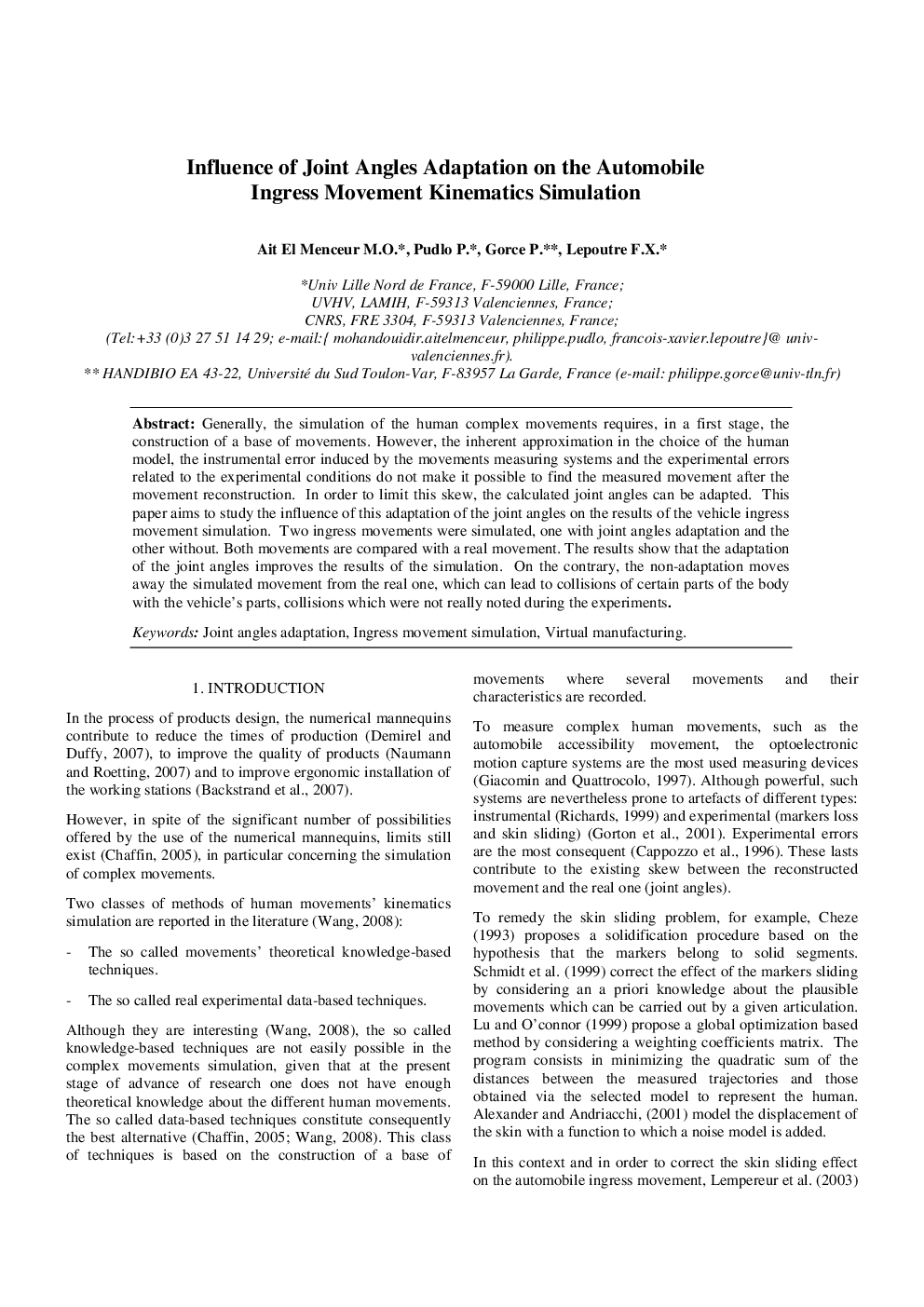| کد مقاله | کد نشریه | سال انتشار | مقاله انگلیسی | نسخه تمام متن |
|---|---|---|---|---|
| 720121 | 892288 | 2010 | 6 صفحه PDF | دانلود رایگان |

Generally, the simulation of the human complex movements requires, in a first stage, the construction of a base of movements. However, the inherent approximation in the choice of the human model, the instrumental error induced by the movements measuring systems and the experimental errors related to the experimental conditions do not make it possible to find the measured movement after the movement reconstruction. In order to limit this skew, the calculated joint angles can be adapted. This paper aims to study the influence of this adaptation of the joint angles on the results of the vehicle ingress movement simulation. Two ingress movements were simulated, one with joint angles adaptation and the other without. Both movements are compared with a real movement. The results show that the adaptation of the joint angles improves the results of the simulation. On the contrary, the non-adaptation moves away the simulated movement from the real one, which can lead to collisions of certain parts of the body with the vehicle's parts, collisions which were not really noted during the experiments.
Journal: IFAC Proceedings Volumes - Volume 43, Issue 4, 2010, Pages 314–319